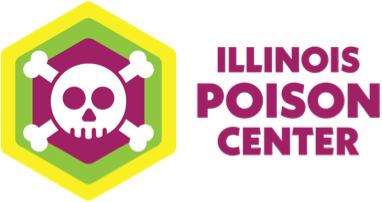Halloween
Costumes plus trick-or-treating equals a whole lot of fun for kids of all ages. Arguably one of the best holidays for children, Halloween requires vigilance from parents and caregivers.
Every year, IPC receives hundreds of calls to our helpline about potential poisoning from Halloween-related items, including glow sticks and dry ice. IPC is here to help with tips to protect you and the children in your life from harm.
Before You Go Out
Buy or make costumes that are nonflammable and an appropriate length to avoid tripping or falling.
Make sure masks fit properly and have large eye and mouth/nose holes so your child can see and breathe easily. Have your child raise the mask when crossing the street.
Buy nontoxic face paint or makeup for a safe, creative alternative to masks. Other products may contain talc or hydrocarbons, which can be toxic. Do not use food coloring because the tint may be difficult to wash off.
For children, it is advised to test makeup on a small area of skin first, preferably the arm, to check for sensitivity to any ingredients before applying it to the face.
While Trick-or-Treating
Stay in familiar, well-lit areas.
Take small children out before dark.
Accompany children with a flashlight, wear reflective clothing and/or put reflective tape on trick or treat bags if going out after dark.
Look carefully before crossing neighborhood streets.
After returning home, remove any makeup your child was wearing before bedtime to prevent skin and eye irritation.
Glow Sticks and Necklaces
These popular items offer some light when kids are out at night. They can break and leak or children chew them open. In small amounts, the liquid is considered minimally toxic.
The liquid can cause irritation or a rash after contact with the skin.
It can cause irritation to the eyes. Call IPC if for any eye exposures.
Ingesting the liquid can cause mild nausea and burning. Symptoms should resolve with few sips of water to drink.
Dry Ice
Dry ice is added to punch bowls for Halloween gatherings for a “bubbling cauldron effect.”
Wear protective clothing, including appropriate gloves, when handling dry ice.
Since dry ice can cause burns, do not place any directly in drinking cups.
Do not use or transport dry ice in a poorly or unventilated area, as it produces carbon dioxide gas. A buildup of carbon dioxide in the air can cause serious effects such as headaches, dizziness, and vomiting.
Store dry ice in an insulated container, not in the freezer.
If swallowed, dry ice can cause internal burns. Direct contact with the skin can cause a frostbite-type injury. Call IPC for any direct skin exposure or ingestion of dry ice.
